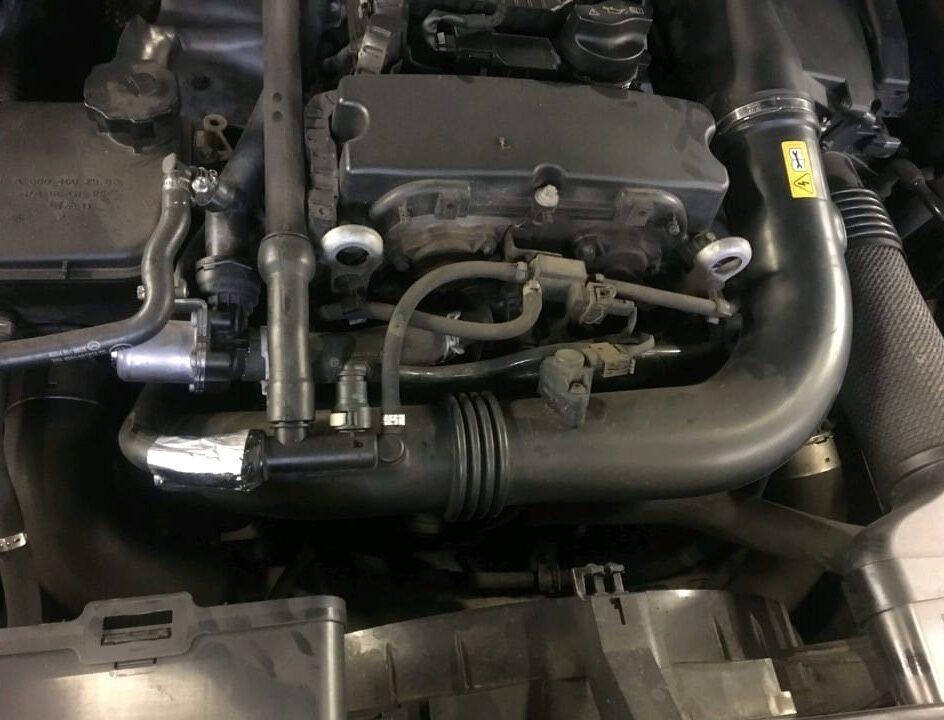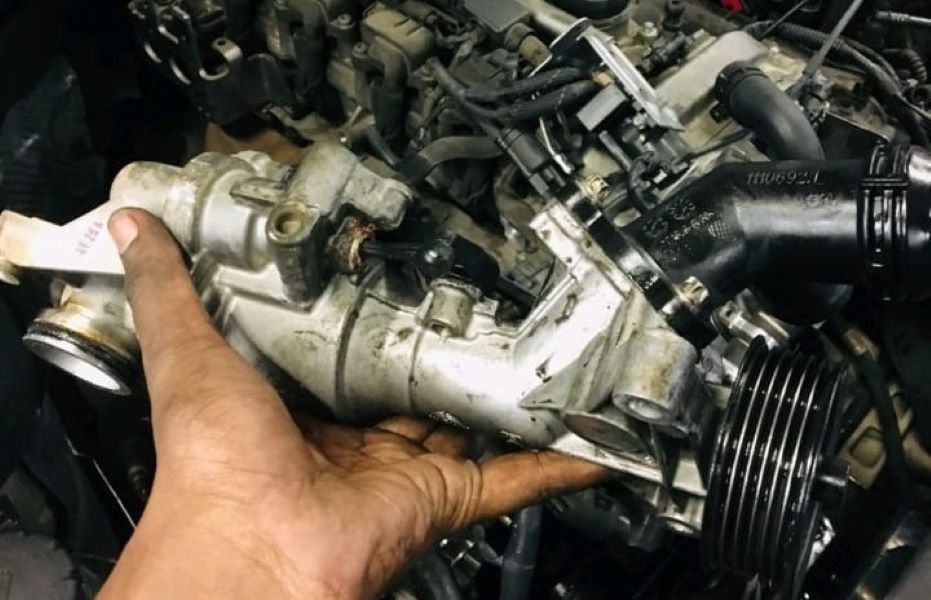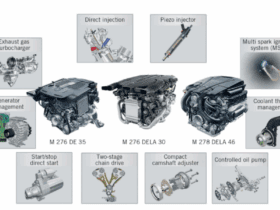Table of Contents
Coolant Leak from Engine: A Case Study in Mercedes-Benz E Class W212 with M274 Engine
Vehicle: Mercedes-Benz E Class W212
Complaint: Coolant Leak from Engine
A coolant leak from the engine is one of the most common yet critical issues drivers may face. If ignored, it can lead to engine overheating, loss of performance, and even total engine failure. For luxury vehicles like the Mercedes-Benz E Class W212 equipped with the M274 Engine, resolving coolant leaks quickly and accurately is essential to protect both performance and longevity.
This case study covers how a coolant leak in a Mercedes-Benz E Class W212 was diagnosed and repaired. By reviewing the symptoms, diagnostic process, repair steps, and preventive measures, you’ll gain insight into how to handle similar issues in your own vehicle.

Symptoms, Causes, and Fixes
| Symptoms | Possible Causes | Recommended Fix |
|---|---|---|
| Visible coolant under the vehicle | Water pump leak, radiator crack, or hose damage | Inspect system and replace faulty component |
| Coolant level warning on dashboard | Slow leak in pump or thermostat housing | Pressure test, locate leak, and repair |
| Engine overheating | Coolant loss due to pump failure or hose leaks | Replace leaking water pump, bleed system |
| Steam from engine bay | Coolant leaking onto hot engine components | Trace leak source, replace defective part |
| Sweet smell inside/outside vehicle | Coolant escaping from system | Check heater core, hoses, or pump seals |
Customer Complaint
The owner of a Mercedes-Benz E Class W212 brought the vehicle to the workshop with the following issue:
- – Coolant was visibly leaking from the engine area.
- – Warning message appeared intermittently in the cluster.
- – Risk of overheating was increasing.
The goal was clear: locate the leak, confirm the source, and repair it before engine damage occurred.
Step 1: Diagnostic Process
To confirm the issue, the technician carried out a coolant system pressure test.
- – When pressurized, the system began losing pressure rapidly, confirming an active leak.
- – A visual inspection revealed coolant pooling near the front of the engine, close to the accessory drive area.
This narrowed the possibilities to the water pump, hoses, or nearby seals.

Step 2: Identifying the Source
Further inspection revealed the water pump was leaking coolant.
- – The water pump is responsible for circulating coolant through the radiator, hoses, and engine block.
- – A leaking pump reduces coolant circulation, increasing the risk of overheating.
- – Over time, seal wear, corrosion, or bearing damage can cause pump failure.
In this case, coolant traces were found at the pump’s housing, confirming it as the failure point.

Step 3: Repair Process: Replacing the Water Pump
Once identified, the solution was straightforward: replace the defective water pump.
Removal of Old Pump
- 1- Drained coolant from system to prevent spillage.
- 2- Disconnected serpentine belt and accessories.
- 3- Removed mounting bolts and detached old pump.


Installation of New Pump
- 1- Installed genuine OEM Mercedes water pump.
- 2- Secured bolts to manufacturer torque specifications.
- 3- Reconnected hoses and checked seals for integrity.

System Refill & Testing
- – Refilled cooling system with Mercedes-approved coolant.
- – Bled system to remove air pockets.
- – Re-ran pressure test → no leaks detected.
- – Monitored engine at idle and driving speeds → temperature remained stable.
Repair successful: The coolant leak was eliminated.
Conclusion
This Mercedes-Benz E Class W212 M274 case study shows how critical it is to act quickly when a coolant leak is detected.
- – Root cause: Faulty water pump.
- – Resolution: Pump replacement, coolant refill, and system bleeding.
- – Outcome: Vehicle restored to normal operation, with stable coolant circulation.
Key Takeaway: Even a minor leak can escalate into a severe issue. Regular inspections and prompt repairs prevent overheating and expensive engine damage.
More Mercedes Cooling System Resources
Want to explore more causes, symptoms, and repair tips for coolant leaks, overheating, and contamination?
Learn more about Mercedes cooling system faults in our full Cooling System Guide.
Why Do Engines Leak Coolant?
Coolant leaks can come from multiple components:
- 1. Water Pump → Seal wear or bearing failure.
- 2. Radiator → Corrosion or physical cracks.
- 3. Thermostat Housing → Heat cycles degrade seals over time.
- 4. Hoses & Clamps → Old rubber hoses can crack or loosen.
- 5. Head Gasket Failure → Coolant enters combustion chambers.
- 6. Heater Core → Leaks into the cabin, causing fogging and odor.
Preventative Maintenance Tips
- – Inspect coolant reservoir monthly.
- – Replace coolant every 2–3 years with OEM-approved fluid.
- – Listen for water pump noises (grinding/whining).
- – Check undercarriage for puddles after parking.
- – Address dashboard coolant warnings immediately.
FAQs
Q1: What are the signs of a failing water pump?
Leaking coolant, overheating, grinding noise from engine front, or steam.
Q2: Can I drive with a leaking water pump?
Not recommended. A leaking pump can lead to overheating and engine failure.
Q3: How much does it cost to replace a water pump in a Mercedes W212?
Between $600–$1,200 depending on parts and labor.
Q4: Can coolant leaks come from multiple places?
Yes. Common sources include hoses, thermostat housing, radiator, and pump.
Q5: How often should the water pump be replaced?
Typically, every 80,000–100,000 miles, or sooner if signs of failure appear.
Author
Written by: Mercedes Expert
Automotive Technical Trainer & Mercedes-Benz Diagnostic Specialist
With years of hands-on experience repairing and diagnosing Mercedes-Benz vehicles, specializes in case-study-based troubleshooting guides that blend workshop accuracy with educational clarity.
Last Updated: August 2025







Leave a Reply